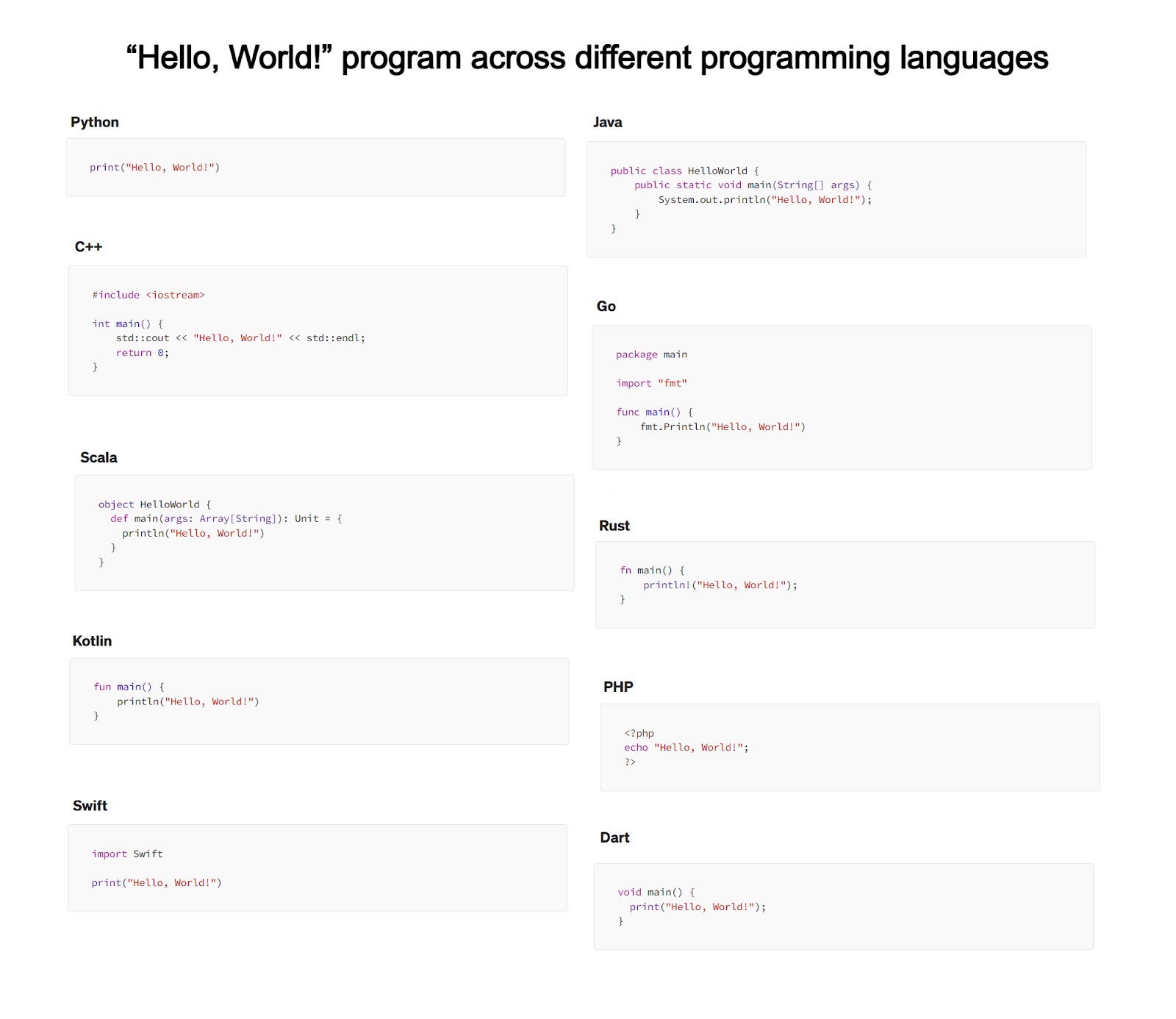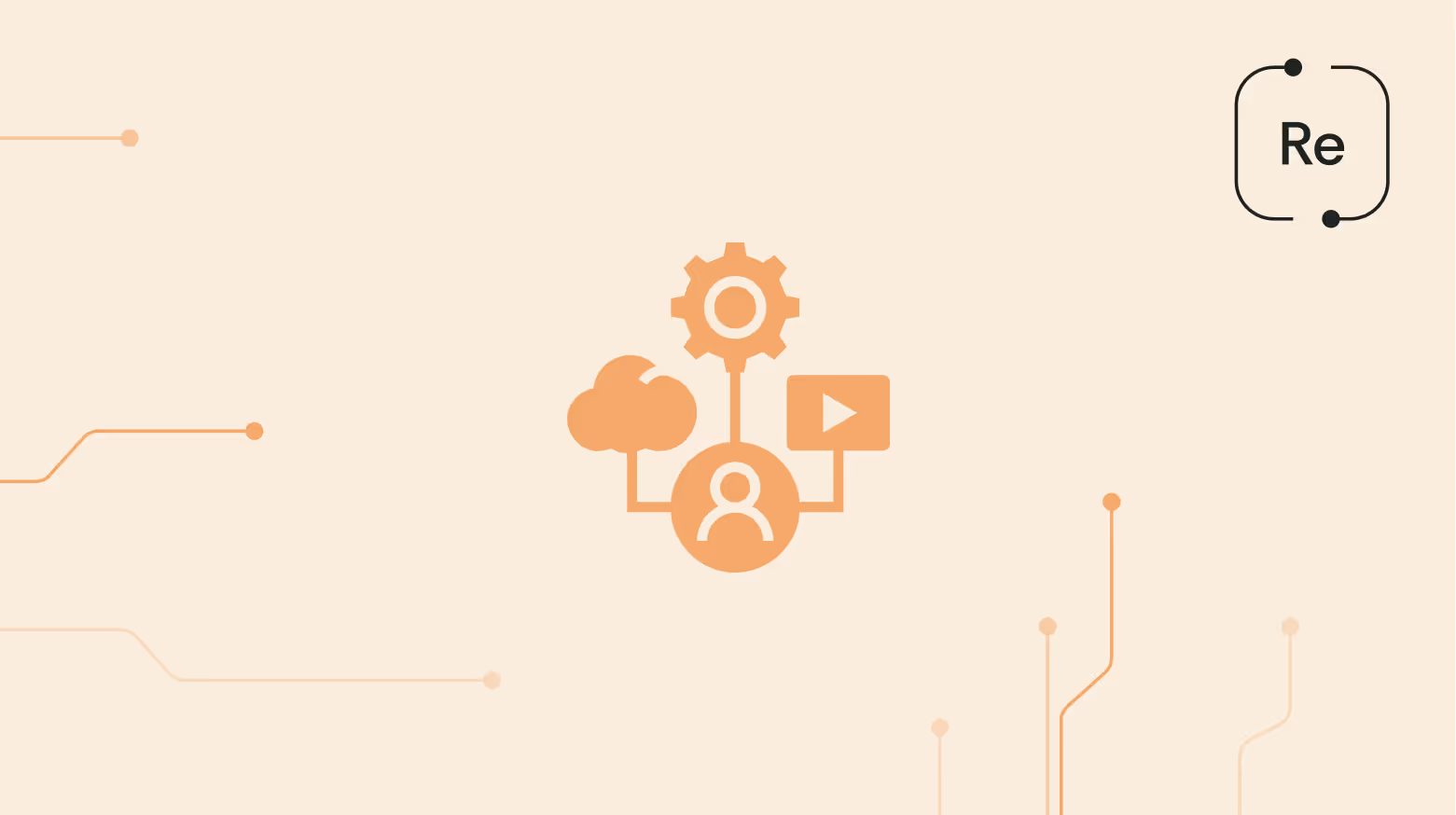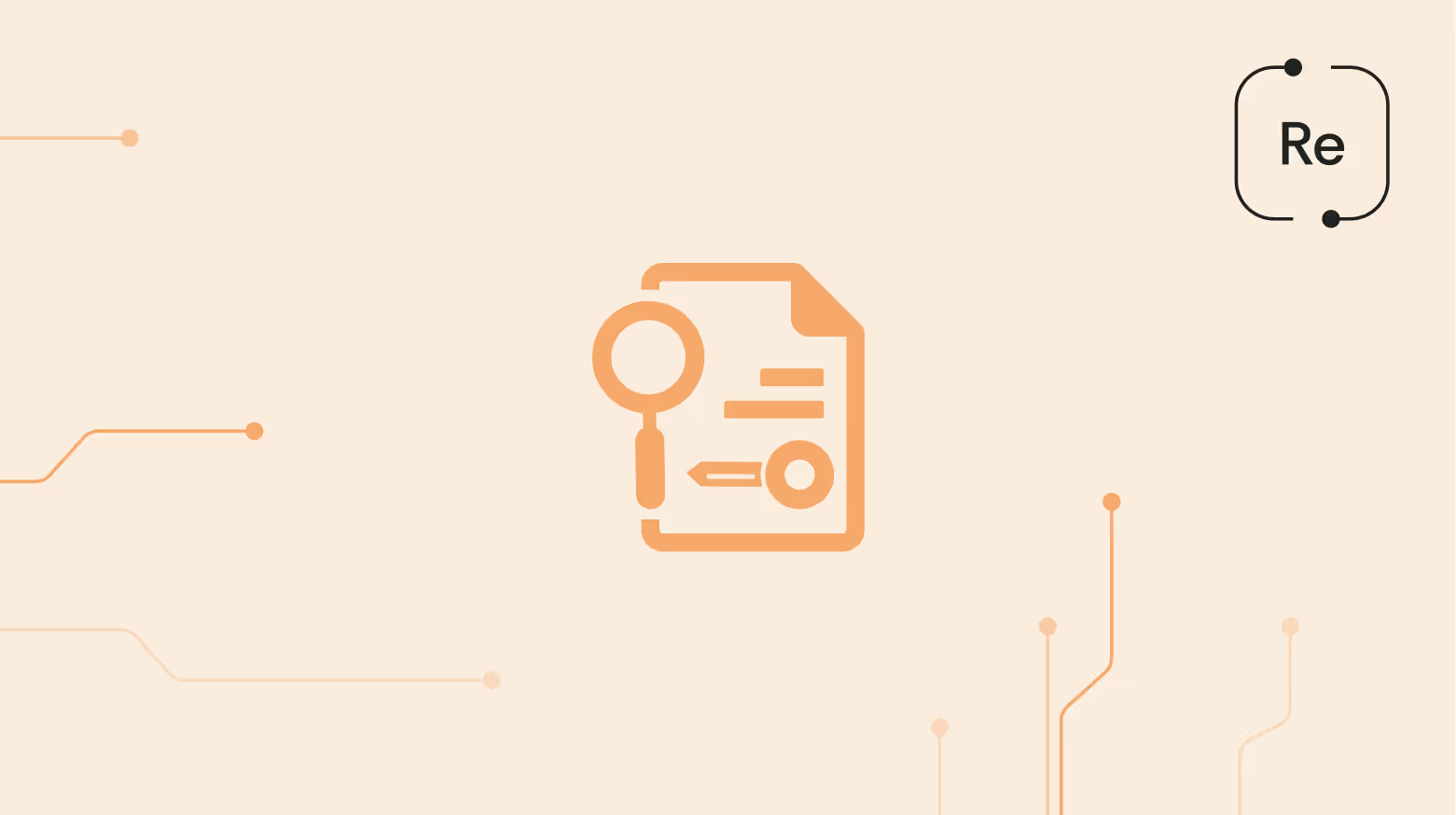
“In God we trust; all others must bring data.”
— William Edwards Deming
Talking about the niche of data retrieving and social media, APIs (Application Programming Interfaces) serve as bridges, enabling your app to communicate and share data seamlessly. Yet, it doesn’t work without a help, though. That’s the reason for “Instagram API Python” or “Instagram Python API” to be such highly popular search queries.
And today not API as its own, but Python is a rock star of the article. Here we’re going to take a closer look at the programming language, examine its strengths, and provide a practical guide on how to connect your application to an API for Instagram data retrieving using Python. Are you in? Let’s go!
Why Get Python: Instagram API from Building to Interactions
“Code is like humor. When you have to explain it, it’s bad.”
— Cory House
The selection of an ideal programming language stands vital to achieve high development speed and extended scalability. So, why get Python Instagram API for building or just for interactions? Python serves as a widely used language for API development and communication because it offers readability alongside extensive library support, which enables developers to handle small requests along with large-scale data operations.
Programmers who need to communicate with APIs through quick interactions should consider Python because of its easy-to-understand syntax and simple nature. Python gives developers the ability to produce and execute API requests through minimal code, while lower-level language instructions demand excessive boilerplate code creation.

Python exhibits a powerful advantage through its broad collection of programming libraries and frameworks which extends to Flask, Django REST Framework (DRF), FastAPI and others. Besides that, to enhance development speed, it provides essential built-in capabilities for authentication, request management, and response processing functions.
Though Python is not always faster than other languages like Java, Go, or C++ in terms of network operations, it performs well because network latency is the main factor here, making the speed of the language itself less crucial.
Additionally, Python is well-supported by a vast community, ensuring that developers have access to rich documentation, troubleshooting resources, and third-party integrations.
For both developers and businesses, Python provides a scalable, maintainable, and efficient way to interact with APIs, whether it’s the official Instagram API or third-party data solutions. Python’s broad framework ecosystem and community backing enables developers to simplify the process of acquiring data and automate social media operations while integrating Instagram data into their own apps without much hassle.
Choosing Your Way of Using Python: Instagram Graph API or Third-Party Solution
As you could already guess, APIs are really widespread and popular solution used for retrieving data from social media, including Instagram platform. And, thus, the very first thing to do is to choose the API to be integrated to your application.
Making a long story short, there are two main choices: the official Instagram Graph API or a third-party solution like Data365 Social Media API. So, let’s get a closer look at them to make your choice easier.
Python & Instagram Graph API: Setting the Stage for Integration
The Instagram Graph API allows developers to programmatically access Instagram Business and Creator Account data using Python. This includes retrieving user profile details, media content (such as photos, videos, and captions), and engagement metrics (likes, comments, and more). It also enables developers to manage comments, track hashtag performance, and gather audience insights — but access is limited to business and creator accounts (personal accounts are excluded).
To interact with the Instagram Graph API (Python or not), you'll first need to set up a Facebook Developer account and register an app through the Facebook for Developers platform. The app must be linked to an Instagram Business or Creator Account, which requires associating the Instagram account with a Facebook Page. After setting up the app, you can generate a short-lived access token using the Graph API Explorer and exchange it for a long-lived token to maintain ongoing access.
Python's requests library makes it easy to send HTTP requests and handle responses from the Instagram Graph API. For API Instagram Python example, a basic GET request to https://graph.facebook.com/v22.0/{user_id}?fields=name,username&access_token=page-access-token returns profile details when authenticated with a valid token.
Here's an Instagram API Python example of how to make that request using the programming language:
import requests
# Access token and user_id (replace with your actual token)
access_token = 'YOUR_ACCESS_TOKEN'
user_id = 'instagram_user_id'
# Define the API endpoint
url = f"https://graph.facebook.com/v22.0/{user_id}?fields=name,username&access_token=page-access-token"
# Send GET request
response = requests.get(url)
# Handle response
if response.status_code == 200:
data = response.json()
print(f"User ID: {data.get('id')}")
print(f"Username: {data.get('username')}")
else:
print(f"Error: {response.status_code}")
print(response.text)No matter if we talk about C++, JavaScript or Python, Instagram Graph API access to more detailed data (recent posts, likes, and comments), you'll need to request specific permissions like instagram_basic and instagram_manage_comments. However, when it comes to Python, there are flexible data processing libraries, such as pandas, that can then help you analyze this data.
Using Instagram API Python consider limits and requirements. So, here is a slight advice, check them all first. A complete list of available endpoints and authentication requirements can be found in the Instagram API Python documentation.
Exploring Available Solutions: Data365 Social Media API and Python
When it comes to tools that are not connected to Meta/Instagram, Data365 API is worth your attention. Data365 is a reputable provider of social media data solutions, specializing in real-time data extraction from major platforms like Instagram, Twitter, Facebook, TikTok, and more since 2018.
It differs from official APIs and scrapers, as long as Data365 doesn't require access to your accounts or creating anyone, meaning you get the public data accessible without a logging in.
Besides that, its key advantages include an auto-scalable infrastructure capable of increasing request volume 5–6 times within minutes, insuring stable processing power, optimized for the expected workload. Thanks to the feature, Data365 API dynamically adjusts within your purchased plan to maintain high throughput and if demand exceeds your package limits, Data365 continue supporting your operations seamlessly.
Data is collected at the moment of your request. Processing the request and data collection takes minimal time (depending on the data volume and the number of requests, but usually not more than one minute), but the data will be accurate and up-to-date. Another advantage is a standardized data structures from popular social media in one place, delivered in an easy-to-process JSON format. This unified interface allows development teams to focus on product refinement rather than adjusting data formats.
Social media became the core focus of Data365 since its foundation in order to develop deep platform understanding for quick adaptation and provide reliable data extraction solutions. So, marketing agencies, AI developers along with cybersecurity firms, researchers, and others who require live insights and substantial dataset retrieval can benefit from Data365 usage.
Developers can integrate it using Python’s requests and pandas libraries by obtaining an API key and sending HTTP requests to the endpoints. The step-by-step instruction on how to indirect and integrate the social media API to your application can be found below.
API, Instagram, Python: Example Code And Hands-On Guide
“Any fool can write code that a computer can understand. Good programmers write code that humans can understand.”
— Martin Fowler
To demonstrate Python’s practicality in API interactions, let’s walk through the step-by-step process of connecting an application to an API using Python. Since we can only reference our own product, we’ll use Data365 Social Media API as an example. Below, you'll find a detailed guide on how to integrate Data365 API with Python to retrieve real-time Instagram data efficiently without creation of accounts or a need of logging in.
Connecting To An API Using Python: A Step-By-Step Guide
Step 1: Setting Up Your Environment
The first things are first. So, make sure you have Python installed on your system and set up correctly.
Python is pre-installed on most macOS and Linux systems, but if you need to install it on Windows, for example, or update it, go to the official Python website and download the needed version.
After that, you need to install required libraries. Use pip to install the essential Python libraries:
pip install requests pandas- requests: For sending HTTP requests to the API;
- pandas: For processing retrieved data (optional, only if you’re going to process the raw data retrieved).
Step 2: Get Started with Data365 API
To interact with Data365’s Social Media API, you need to get API credentials (API access token). This API key is required for authentication and access to the API’s features. For that, just book a call with a manager to discuss your project requirements, learn how Data365 can help you, request API access, and obtain your API key for a test if needed.
During the call, the manager will walk you through the basic functionality, and you can get more information to start the test:
- Familiarize yourself with the Data365 API endpoints;
- Understand what types of data can be collected;
- Check out the sorting filters and parameters available for each social network;
- Get example responses.
Starting with the test and all the way through the collaboration, when you require any help, you can contact Data365's email support team for further instructions or adjustments.
Step 3: Writing the Python Code
Sometimes it’s easier to show than to describe. So, here is an example of what a Python script to retrieve Instagram data using Data365 API can look like.
Example 1: Retrieve Instagram Profile Data
When working with the Data365 API, you first send a POST request to initiate data collection (e.g., for a profile or post). To make sure the request was processed correctly, you can check the status of the request and when it's finished, you then use a GET request to retrieve the results.
An average latency is around a minute (can be from 10 seconds to 10 minutes, depending on the data requested) to process the update. This example fetches basic profile publicly available details, including username, full name, followers count, bio, and post count.
import requests
# Define API credentials
api_key = "YOUR_DATA365_API_KEY"
user_name = "instagram_username"
# Define the API endpoint
post_url = f"https://api.data365.co/v1.1/instagram/profile/{user_name}/update"
params = {
"access_token": api_key,
}
try:
# Handle the response
post_response = requests.post(post_url, params=params)
post_response.raise_for_status() # Raise an exception for bad status codes (4xx or 5xx)
print("POST request successful.")
except requests.exceptions.RequestException as e:
print(f"Error during POST request: {e}")
import requests
# Define API credentials
api_key = "YOUR_DATA365_API_KEY"
user_name = "instagram_username"
# Define the API endpoint
url = f"https://api.data365.co/v1.1/instagram/profile/{user_name}"
# Set request parameters
params = {
"access_token": api_key,
}
# Send request
response = requests.get(url, params=params)
# Handle the response
if response.status_code == 200:
data = response.json()
# Extract profile information
profile = data.get("data", {})
print(f"Username: {profile.get('username')}")
print(f"Full Name: {profile.get('full_name')}")
print(f"Followers: {profile.get('followers_count')}")
print(f"Following: {profile.get('followings_count')}")
print(f"Bio: {profile.get('biography')}")
print(f"Posts Count: {profile.get('posts_count')}")
else:
print(f"Error: {response.status_code}")
print(response.text)Expected Output:
{
"data": {
"id": "123456",
"username": "username",
"full_name": "Name Surname",
"profile_photo_url": "url",
"profile_photo_url_hd": "url",
"profile_avatar_url": "url",
"external_url": "url",
"business_category": [],
"langs": [],
"is_private": false,
"is_verified": true,
"is_business_account": true,
"public_phone_country_code": "1",
"public_phone_number": "123456",
"public_email": "email@example.com",
"is_joined_recently": true,
"followers_count": 123456,
"followings_count": 123456,
"posts_count": 100000,
"highlight_reels_count": 100,
"about_account": {},
},
"error": null,
"status": "ok"
}Example 2: Fetch Recent Instagram Posts
You can use Data365 API if you are also interested in collecting publicly available posts from a profile's feed. By adding a specific query parameter to the same POST request we used earlier, the system will collect not only public profile info, but also update the data on the requested posts (from another of our API URL) from this profile too.
It's possible to the max number of latest public posts that are needed, for instance, 10 or 1000. Once the task is complete, the posts' info is available with another GET request, along with likes, comments, and media URLs. This example retrieves up to 10 recent posts along with likes, comments, and media URLs.
import requests
# Define API credentials
api_key = "YOUR_DATA365_API_KEY"
user_name = "instagram_username"
# Define the API endpoint
post_url = f"https://api.data365.co/v1.1/instagram/profile/{user_name}/update"
params = {
"access_token": api_key,
"load_feed_posts": True,
"max_posts": 10,
}
try:
# Handle the response
post_response = requests.post(post_url, params=params)
post_response.raise_for_status() # Raise an exception for bad status codes (4xx or 5xx)
print("POST request successful.")
except requests.exceptions.RequestException as e:
print(f"Error during POST request: {e}")
import requests
# Define API credentials
api_key = "YOUR_DATA365_API_KEY"
user_name = "instagram_username"
section = "feed"
# Define the API endpoint
url = f"https://api.data365.co/v1.1/instagram/profile/{user_name}/{section}/posts"
# Set request parameters
params = {
"access_token": api_key,
}
# Send request
response = requests.get(url, params=params)
# Handle the response
if response.status_code == 200:
data = response.json()
posts = data.get("data", {}).get("items", [])
for post in posts:
print(f"Post ID: {post.get('id')}")
print(f"Text: {post.get('text')}")
print(f"Posted at: {post.get('created_time')}")
print(f"Likes: {post.get('likes_count')}")
print(f"Comments: {post.get('comments_count')}")
print(f"Media URL: {post.get('attached_media_display_url')}")
print("-" * 50)
else:
print(f"Error: {response.status_code}")
print(response.text)In short, you get the Post ID, caption, creation date, number of likes and comments, and other fields. Here is an excerpt of a possible output:
Post ID: 123456789
Caption: "Sunset vibes 🌅"
Posted at: 2024-03-10T15:30:00Z
Likes: 3500
Comments: 210
Media URL: https://instagram.com/media/example.jpg
--------------------------------------------------Step 4: Data Processing & Analysis
Note: Data365 API doesn’t provide analysis tool, thigh the Data365 API gives you full access to raw, real-time social media data exactly as it appears publicly, nothing is filtered, averaged or pre-processed. This ensures maximum flexibility, allowing you to build custom analytics workflows and integrate the data into your own analytics dashboards/solutions for further processing.
Example: You gather data and engagement metrics (likes and comments) to understand what type of content resonates with your audience most of all. Thus, by retrieving data using Data365 API and further loading Instagram post data into Pandas for analysis into your dashboard or app, you can track: engagement rate, the average monthly/quarterly/yearly engagement, or any other calculations needed:
from datetime import datetime
import pandas as pd
import requests
from typing import Optional
def get_profile(api_key: str, user_name: str) -> dict:
"""
Get the Instagram public profile details for a given user.
"""
url = f"https://api.data365.co/v1.1/instagram/profile/{user_name}"
params = {"access_token": api_key}
response = requests.get(url, params=params)
if response.status_code != 200:
raise Exception(f"Request failed with status code: {response.status_code}\n{response.text}")
data = response.json()
return data.get("data", {})
def get_followers_count(profile: dict) -> Optional[int]:
"""
Extracts the follower count from the profile data if publicly available.
"""
return profile.get("followers_count")
def get_posts(api_key: str, user_name: str, section: str) -> list:
"""
Get public posts for a given user.
"""
url = f"https://api.data365.co/v1.1/instagram/profile/{user_name}/{section}/posts"
params = {"access_token": api_key}
response = requests.get(url, params=params)
if response.status_code != 200:
raise Exception(f"Request failed with status code: {response.status_code}\n{response.text}")
data = response.json()
return data.get("data", {}).get("items", [])
def full_months_diff(start_date: datetime) -> int:
"""
Calculate the number of full months between a given date and today.
"""
today = datetime.today()
return (today.year - start_date.year) * 12 + (today.month - start_date.month)
def calculate_engagement_metrics(posts: list, followers_count: Optional[int]) -> None:
"""
Processes posts data and calculates engagement metrics.
"""
posts_df = pd.DataFrame(posts)
# Calculate engagement (likes + comments)
posts_df["engagement"] = posts_df["likes_count"] + posts_df["comments_count"]
# Calculate how many full months have passed since the publication date.
posts_df["created_time"] = pd.to_datetime(posts_df["created_time"])
posts_df["full_months_since_posted"] = posts_df["created_time"].apply(full_months_diff)
# Calculate the average monthly engagement.
posts_df["average_monthly_engagement"] = posts_df["engagement"] / posts_df["full_months_since_posted"]
# Calculate engagement rate (ratio of engagement to followers count)
posts_df["engagement_rate"] = (posts_df["engagement"] / followers_count) if followers_count else None
data_to_display = posts_df.to_string(
columns=[
"id", "created_time", "likes_count", "comments_count", "engagement",
"full_months_since_posted", "average_monthly_engagement", "engagement_rate"
]
)
print(data_to_display)
if __name__ == "__main__":
# Define API credentials
api_key = "YOUR_DATA365_API_KEY"
user_name = "instagram_username"
section = "feed"
profile = get_profile(api_key, user_name)
followers_count = get_followers_count(profile)
posts = get_posts(api_key, user_name, section)
calculate_engagement_metrics(posts, followers_count)Instagram, Python, API: Key Takeaways and Some Advice
Python has established itself as the go-to language for working with APIs, including the Instagram Graph API and third-party solutions. Its simplicity, extensive libraries, and strong community support make it ideal for building efficient API integrations.
With Python, developers can automate data retrieval, manage authentication, and process large datasets efficiently. Whether using the Instagram API Python documentation or exploring third-party tools like Data365, Python’s versatility ensures streamlined and scalable social media data integration to your application.
As you see, Python is universal and when it comes to effectiveness, the main decision lies in the data-retrieving tool. The official Instagram API provides structured access to business and creator data, while third-party solutions like Data365 APIs offer more flexible alternatives and customization. Everything depends on the needs and objectives of your project.
If you need any assistance or learn more about the solution and its features, feel free to ask, and our specialists will provide you with all the details on Data365 API and its features.
Extract data from five social media networks with Data365 API
Request a free 14-day trial and get 20+ data types








.svg)
.svg)
.svg)






.svg)
.svg)
.svg)
